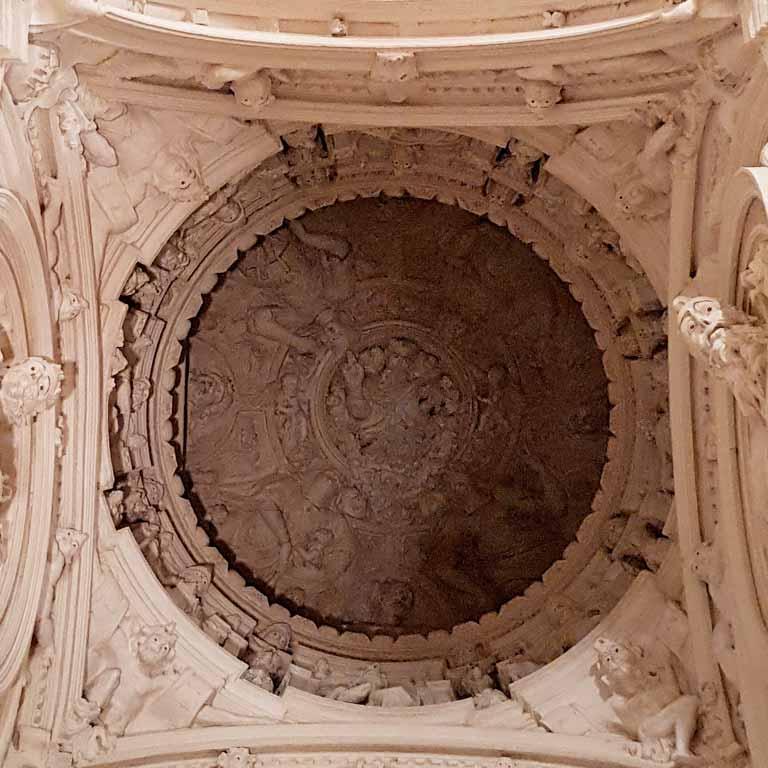Albarracín (Teruel)
What you can see and do in Albarracín
Must has been said about Albarracín; of all of them, the traveller might recall that it is one of the loveliest towns in Spain. Located in an impressive natural setting, in the Montes Universales above a deep ravine carved out by the River Guadalaviar, at 1,171m altitude, its image is unmistakeable.
The town extends across a small rocky peninsula formed by the meander of the river. The scarcity of land caused the current appearance of the town: narrow streets and stepped houses whose walls are predominantly covered by the reddish plaster so characteristic of Albarracín. A walk around the steep streets of the town, adapted to its topography, is warmly recommended: alleys and passageways, steps, impossible eaves and railings together with a large number of unique and monumental buildings, above all the Cathedral of El Salvador and numerous mansions.
The cathedral is the result of the geography of the town, placed on a peak, it is small with a single nave, the heir of an architectonic solution that located there the first Visigothic church, the main mosque and later, under the lordship of Azagra, a church that might have been Romanesque or Mudejar, and a Gothic one of which some remains are conserved embedded in the present edifice, begun in the 16th century, in which the late Gothic is combined with the Renaissance style.
The Episcopal Palace is next to the cathedral and now hosts the Diocese Museum. A visit is very interesting because it displays some important information about the history of Albarracín; it shows what daily life was like in the palace, and exhibits objects of great interest for several reasons and not only artistic ones: such as the 16th century incense burner in rock crystal carved in Venice or Milan, relics of St Teresa, the collection of Flemish tapestries and the bishop’s Baroque chapel lysergic.
The town has other museums: the most important for travellers interested in El Cid is Albarracín Museum, in the old hospital, very near the cathedral. The section devoted to the Middle Ages includes 11th century pottery, coins and utensils from everyday life at that time.
One of the recurrent elements in the visit is the defensive system around the town, formed by a castle and two strategic towers, the Doña Blanca Tower and the Andador Tower, connected by a line of walls protecting the town. Although these constructions originated in the 10th and 11th centuries, the modern appearance dates from the 14th century although in the castle we can find evidence of its Islamic past in the archaeological remains found there.
While Andador Tower, perched on the top of the hill, is visible from many parts of the town, Doña Blanca Tower, or Blanca Tower seems to be hidden round a bend, in a strategic point of the rocky crest. It is thought that the original Arab settlement was there. Now the tower is a suggestive space for exhibitions with lovely views over Albarracín and the surrounding area. St Mary’s Church, of the 16th century, is next to the tower. It consists of a single nave with a rib vault and side chapels in the buttresses. It is now an auditorium.
Albarracín is also the start of trekking routes and excursions across mountains of great scenic and environmental value. Travellers who stay in the town for several days can discover canyons, ravines, crags and forests with great diversity of flora and fauna. If you are in a hurry (a poor companion), go to the start of the natural area of Rodeno, located at a look-out point next to the corral of the saint, with interesting views of Tejería Ravine, only 2.5km from the town on the TE-05.
The Sierra de Albarracín is located in one of the darkest areas of the Iberian Peninsula. According to experts, in the mountains of Albarracín you can see about 6000 stars. The Sierra de Albarracín received in 2020 the title of Starlight Tourist Destination, which indicates that a tourism destination is especially suitable for developing tourism activities based on this natural resource. Albarracín offers routes and trails where you can partake in evening activities with the right conditions (full moon and the Milky Way), spaces that are found in areas of high environmental value.
You also should not miss
- The Mountains of Albarracín contain prehistoric rock-shelters catalogued in the Rock Art of the Mediterranean Basin in the Iberian Peninsula, designated World Heritage in 1998. The places that have been listed are the rock-shelters of Fuente del Cabrerizo, of the Yellow Figures, of the Diverse Figures, of Lázaro, of Two Horses, of the Bulls of Prado del Navazo, of the Archer of Callejones Cerrados, of the Stag, of the Half Horse, of Tío Campano, and of the Black Bull, as well as the Ravine of Pajarejo, the Cave de Doña Clotilde, and Cocinilla del Obispo Some of these sites can be visited. Most of them are reached along the winding TE-05 road, which crosses the Natural Area of the Rodeno Pine Forests. Information panels next to the road will guide unhurried trekkers towards the most important rock-shelters along attractive footpaths. Albarracín Tourism Office will provide information about access and options.
- Another of Albarracín’s great attractions is outside the town. It is a Roman aqueduct that took water from Albarracín to Cella, a magnificent feat of engineering that visitors can follow in part, with an interpretation centre in Gea de Albarracín. The castle of Santa Croche was built in the 15th century to protect the aqueduct and govern its use. This is outside the town, next to the Gea de Albarracín road.
Rev.: JGG 11.08.21
Información práctica
- Ayuntamiento: Plaza Mayor, 1 (44100)
- Teléfono: 978 700 400
- Correo electrónico: albarracin@albarracin.es
- Web: www.albarracin.es
- Habitantes: 910
- Altitud: 1170 m.






















































